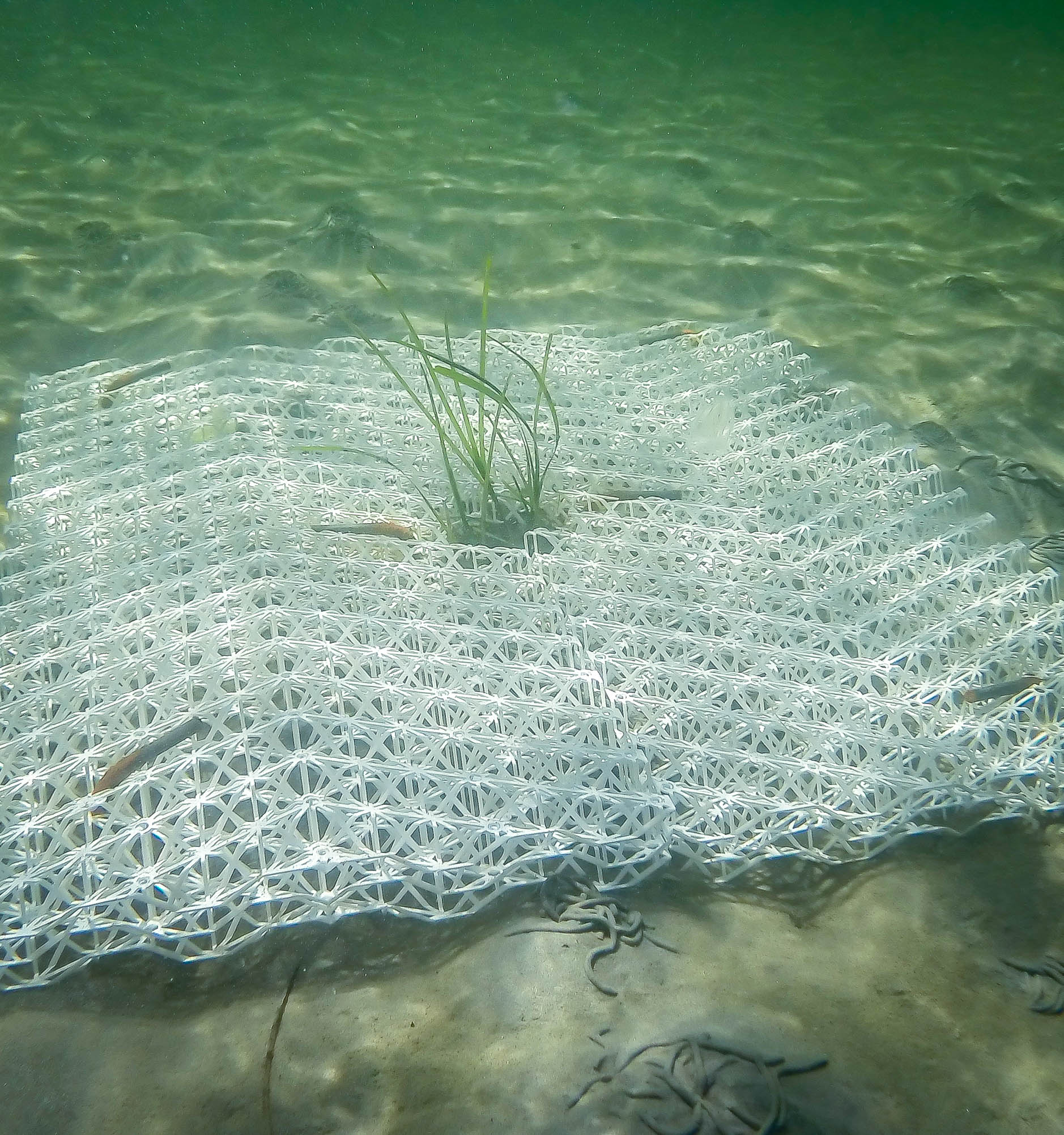Abstract
Restoration is becoming a vital tool to counteract coastal ecosystem degradation. Modifying transplant designs of habitat-forming organisms from dispersed to clumped can amplify coastal restoration yields as it generates self-facilitation from emergent traits, i.e. traits not expressed by individuals or small clones, but that emerge in clumped individuals or large clones.
Here, we advance restoration science by mimicking key emergent traits that locally suppress physical stress using biodegradable establishment structures. Experiments across (sub)tropical and temperate seagrass and salt marsh systems demonstrate greatly enhanced yields when individuals are transplanted within structures mimicking emergent traits that suppress waves or sediment mobility. Specifically, belowground mimics of dense root mats most facilitate seagrasses via sediment stabilization, while mimics of aboveground plant structures most facilitate marsh grasses by reducing stem movement.
Mimicking key emergent traits may allow upscaling of restoration in many ecosystems that depend on self-facilitation for persistence, by constraining biological material requirements and implementation costs.












